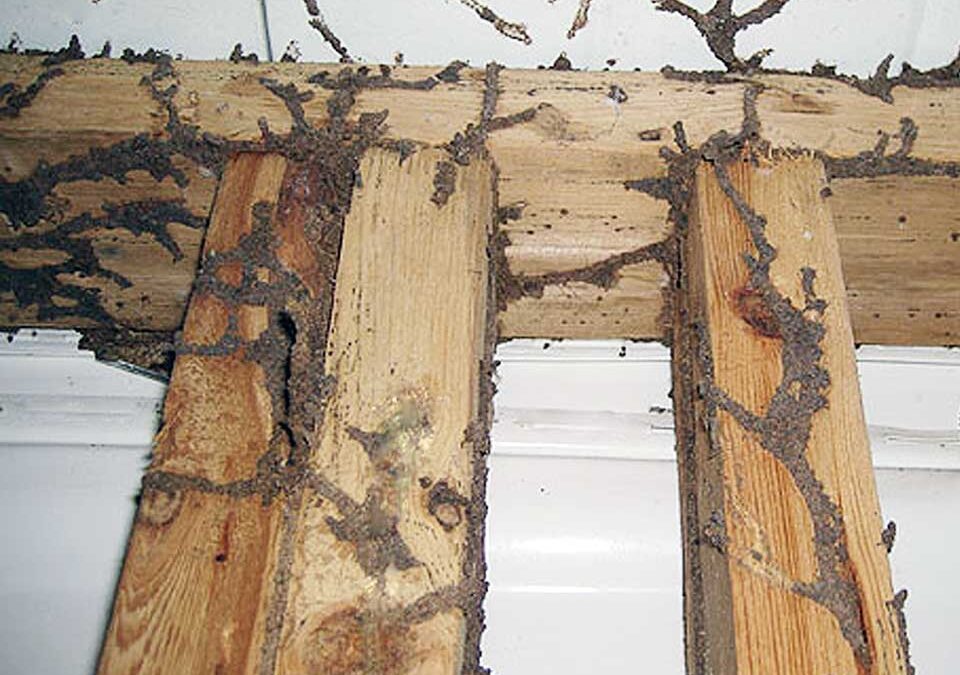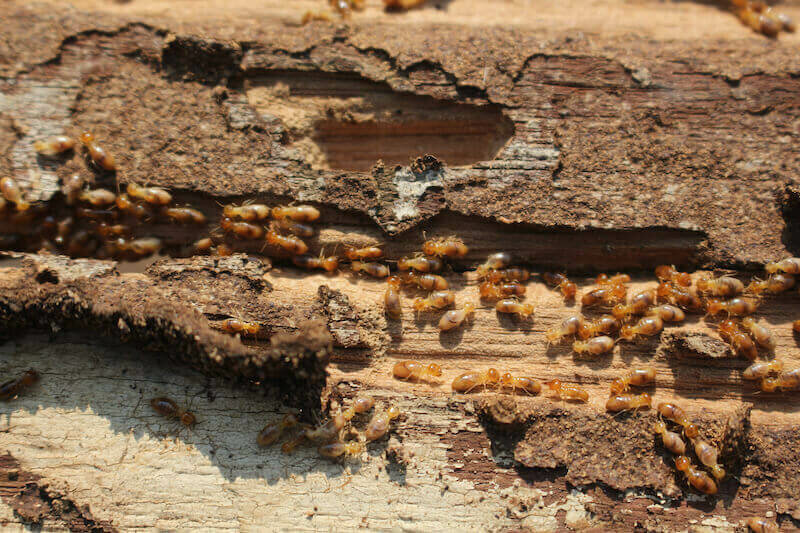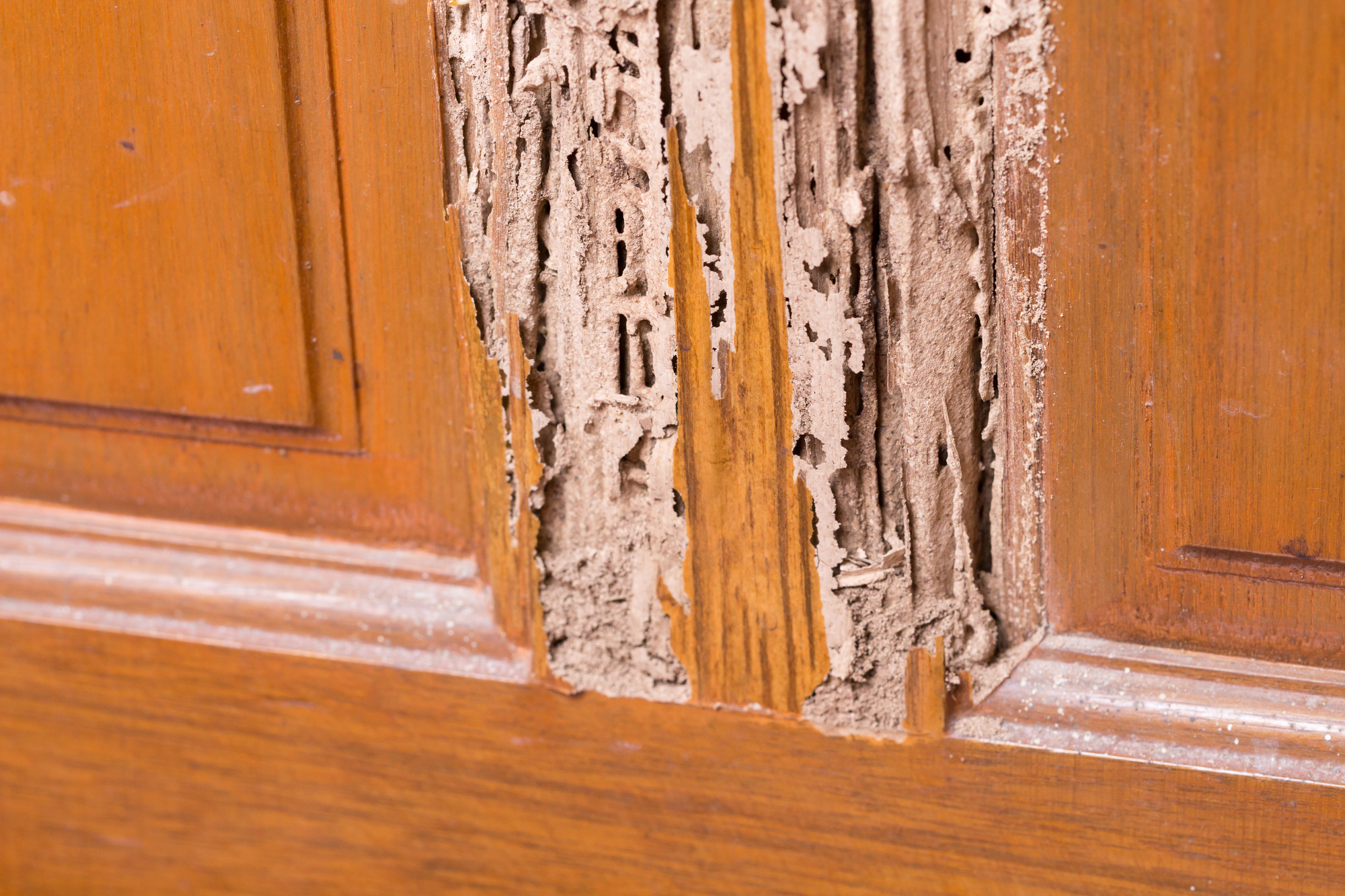Florida’s subtropical climate—featuring mild winters, ample humidity, and warm temperatures—offers ideal conditions for termites to remain active all year. In Ocala, a city blending suburban living with equestrian traditions, these wood-eating insects can infiltrate walls, floors, or furniture, causing hidden yet significant damage if not addressed quickly. This service page outlines why termites thrive in Florida, how to spot an infestation, and why consulting a professional termite exterminator is your most reliable method to protect your property’s structural integrity.
Whether you own a single-family residence in Ocala or manage rentals in the nearby communities of Summerfield, Dunnellon, or Belleview, identifying termites promptly—and employing targeted treatments—helps prevent costly repairs, occupant stress, and repeated do-it-yourself efforts that rarely reach all hidden colonies or egg-laying queens.
Why Termites Flourish in Florida
Mild Winter Temperatures
In northern states, subfreezing winters reduce or suspend termite colonies. Florida’s gentle cold season rarely dips below freezing long enough to disrupt termite life cycles. Climate-controlled buildings stay around 65–85°F, letting termites feed and breed consistently, unaffected by harsh seasonal slowdowns.Termites
High Humidity and Moisture
Termites, particularly subterranean ones, rely on damp wood or moist soil to survive. Florida’s frequent rain, lawn irrigation, and generally high humidity keep soils and hidden corners damp—ideal for termite mud tubes and nest expansions. Even small leaks under sinks or condensation around air conditioners can support termite foraging routes.
Abundant Wood Structures
From framing and wooden trim to fences, decks, or mulch, Florida properties often provide extensive cellulose-based materials that termites devour. Without occupant vigilance or routine inspections, these insects secretly tunnel through beams, floors, or furniture, undermining the property’s stability over time.
Rapid Colony Growth
A single termite queen lays numerous eggs daily, while worker termites forage widely in search of new wood sources. Florida’s warm climate speeds up termite growth and reproduction, enabling small unnoticed infestations to expand rapidly behind walls or under floors if occupant detection lags.
Movement of Goods and Residents
With Florida’s ongoing relocations, tourism, and shipping, termites can hitch rides on wood-based items—like crates, pallets, or secondhand furniture—shuttling from one region to another. In multi-unit buildings or properties with occupant turnover, uninspected wood items raise the risk of spreading hidden termite nests if occupant or manager checks fall short.

Telltale Signs of a Termite Infestation
- Mud Tubes
- Subterranean termites construct pencil-thin tunnels along foundation walls or crawl space supports.
- Spotting these earthen tubes bridging soil and wood strongly indicates active foraging routes.
- Subterranean termites construct pencil-thin tunnels along foundation walls or crawl space supports.
- Discarded Wings
- Winged termites (alates) shed translucent wings after swarming and mating.
- Clusters of wings near windowsills or baseboards suggest a new colony forming close by.
- Winged termites (alates) shed translucent wings after swarming and mating.
- Hollow or Damaged Wood
- Termites eat wood internally, leaving thin outer shells that sound hollow when tapped.
- Warping or blistering paint may also betray hidden termite tunneling below the surface.
- Termites eat wood internally, leaving thin outer shells that sound hollow when tapped.
- Drywood Termite Droppings (Frass)
- Tiny, ridged pellets resembling sawdust or coffee grounds, typically piled near holes or cracks.
- These droppings confirm drywood termites are expelling waste from deep inside wooden structures.
- Tiny, ridged pellets resembling sawdust or coffee grounds, typically piled near holes or cracks.
- Swarmers
- During warm, humid months, colonies release winged swarmers to establish new nests.
- Observing swarmers indoors or near doorways implies a mature colony close by.
- During warm, humid months, colonies release winged swarmers to establish new nests.
- Sticking Doors or Windows
- Internal wood damage can deform or swell frames, causing windows or doors to jam.
- Paired with other signs, sticky frames point to concealed termite feeding in the wood.
- Internal wood damage can deform or swell frames, causing windows or doors to jam.
The Risks of Overlooking Termites
Structural Weakening
Termites quietly devour wood from within, undermining beams, subflooring, or load-bearing supports. Significant infestations can create sagging floors or cracked drywall—eventually threatening occupant safety if not intercepted early.
Soaring Repair Costs
If detected early, localized spot treatments or moderate interventions might suffice. Delaying until termites spread behind walls or floors often necessitates whole-structure fumigation or major reconstruction, escalating occupant disruption and bills.
Colony Spread to Adjacent Buildings
Subterranean termites may construct extensive underground networks. If occupant or manager vigilance fails, infestations expand from one area to surrounding structures, causing far-reaching damage and demanding broader professional checks.
Moisture and Fungus
Termite tunneling in damp wood can also lead to mold or mildew growth, compounding occupant health concerns and accelerating structural rot.
Occupant Stress and Insurance Issues
Termite damage typically isn’t covered by standard homeowner’s insurance, leaving owners to pay out of pocket. The possibility of unseen wood destruction behind walls or floors fosters occupant anxiety until professional measures confirm elimination.

Why a Professional Termite Exterminator Is Essential
Accurate Infestation Assessment
A termite exterminator meticulously checks crawl spaces, foundations, attic beams, or yard edges for mud tubes, frass, or hollow wood. Identifying whether they are subterranean, drywood, or Formosan termites dictates whether fumigation, soil barriers, or local spot treatments work best.
Colony-Wide Elimination
DIY sprays often kill only visible termites, missing concealed colonies in walls or underground. Professional solutions include:
- Soil Termiticides: Laying chemical barriers around foundations for subterranean species.
- Bait Stations: Slow-acting poisons carried by worker termites back to the entire nest.
- Fumigation (Tenting): For large or persistent drywood colonies saturating deeper wood layers.
- Localized Spot Treatments: Foam or liquid termiticides injected into specific pockets.
Safe, Regulated Chemical Applications
Improper insecticide usage endangers occupants, pets, or water systems. Licensed exterminators apply termiticides or fumigants per label standards, ensuring lethal termite impact while shielding occupant well-being. Soil treatments remain underground; fumigation requires occupant evacuation until safe re-entry.
Emphasis on Moisture Control and Repairs
Many subterranean termites rely on moisture. Professionals guide owners on correcting leaks, improving drainage, or replacing damp wood. Drywood termites may enter through cracks in eaves or attic beams; sealing these cracks or upgrading vents helps deter re-infestation.
Warranties & Ongoing Monitoring
Numerous termite experts offer warranties or annual inspection options. Occupants enjoy peace of mind that any reappearance is swiftly handled. Subscribing to scheduled checks ensures no fresh mud tubes or swarmers go unnoticed, keeping the property termite-free long term.
Typical Methods for Termite Treatments
- Inspection & Colony Determination
- Exterminators inspect attics, crawl spaces, or foundation edges for mud tubes, frass, or weakening wood.
- Confirming subterranean vs. drywood termites informs whether soil barriers, fumigation, or spot injections are ideal.
- Exterminators inspect attics, crawl spaces, or foundation edges for mud tubes, frass, or weakening wood.
- Soil Termiticides
- Subterranean termites commonly face trenching or drilling around foundations.
- Termites crossing treated soil pick up lethal chemicals, collapsing the nest over time.
- Subterranean termites commonly face trenching or drilling around foundations.
- Bait Stations
- Slow-acting toxins placed in ground stations near foundations.
- Worker termites feed and return poison to the colony, causing widespread colony death.
- Slow-acting toxins placed in ground stations near foundations.
- Fumigation (Tenting)
- Usually for significant drywood termite intrusions spanning multiple rooms.
- The structure is tented and filled with gas, reaching concealed wood layers that localized treatments may miss.
- Usually for significant drywood termite intrusions spanning multiple rooms.
- Localized or Spot Treatments
- Smaller drywood nests can be directly injected with termiticidal foams or liquids.
- Follow-up checks confirm no hidden pockets remain active.
- Smaller drywood nests can be directly injected with termiticidal foams or liquids.
- Moisture Reduction & Wood Repairs
- Fixing leaks under sinks, redirecting water away from foundations, or removing rotted wood.
- Subterranean termites need moisture; cutting off water sources disrupts their foraging.
- Fixing leaks under sinks, redirecting water away from foundations, or removing rotted wood.
- Annual or Semi-Annual Inspections
- Ongoing professional checks catch emergent mud tubes or swarms early.
- Occupants remain alert for suspicious droppings or hollow wood, ensuring immediate response if new colonies attempt to form.
- Ongoing professional checks catch emergent mud tubes or swarms early.
- Inspection & Colony Determination

Service Areas: Ocala, Summerfield, Dunnellon, Belleview
While termites thrive across Florida’s mild winter climate, this page zeroes in on Ocala, a central Florida city bridging equestrian culture with suburban growth. Our termite exterminator solutions also benefit:
- Summerfield: Suburban-rural mix, occupant or staff readiness is key if leftover moisture or unguarded wood contact remains.
- Dunnellon: Scenic river areas see occupant changes or shipping flows that might inadvertently ferry drywood termites in used wood items.
- Belleview: A smaller city with older homes or expansions, each vulnerable to infiltration if occupant vigilance or building maintenance falls short.
Florida’s limited freezing seldom slows termites, compelling occupant synergy plus specialized treatments for total control or elimination.
Why Choose Us
Florida-Tailored Strategies
We adapt recognized termite control—soil termiticides, fumigation, baits—to central Florida’s climate and occupant habits. Occupants also learn ways to remove conducive conditions (damp wood, direct soil-wood contact, etc.), ensuring extensive termite eradication rather than partial solutions.
Meticulous Property Inspections
Our technicians check foundations, crawl spaces, or attics for mud tubes, frass, or hollow wood. Determining how extensive or advanced the colony is clarifies whether localized injections suffice or entire-structure fumigation is needed for occupant protection.
Safe, Effective Methods
We comply with label guidelines and occupant safety, injecting termiticides underground, sealing the structure for fumigation, or applying foam to infested beams. Our balanced approach kills termites thoroughly while sparing occupant or pet well-being.
Moisture & Wood Repairs
Because subterranean termites require moisture, occupant synergy—like fixing leaks, improving drainage, or removing rotted wood—undercuts future foraging attempts. Drywood termites slip through cracks in eaves or attic beams, so sealing them remains crucial.
Ongoing Monitoring & Service Agreements
Since fresh termites may appear, many exterminators provide warranties or annual checks. Occupants rest easy: if new tubes or swarmers show up, re-treatments or further scanning handle them promptly. This occupant plus professional synergy preserves a termite-free environment.
Next Steps
Spotting mud tubes near your foundation, hearing hollow-sounding beams, or finding termite wings by windows? Contact us to learn more or schedule your service. Our termite treatments for Ocala, Summerfield, Dunnellon, and Belleview combine thorough inspections, recognized solutions (soil barriers, bait stations, fumigation), occupant advice, plus re-checks—fully removing existing colonies while shutting out new ones.
Act swiftly to spare occupant stress, forestall advanced structural damage, and avoid repeated occupant attempts that only address visible termites. Lean on our Florida-specific termite exterminator expertise to locate, eradicate, and prevent these hungry insects, keeping your property stable and occupant comfort intact in Florida’s mild, year-round termite-friendly setting.
Maintaining a Termite-Free Property
Once professionals remove termites, occupant steps hamper re-invasions:
- Reduce Wood-Soil Contact
- Keep fence posts, decking, or exterior supports elevated via concrete footings.
- Avoid stacking firewood or scrap lumber directly against outer walls.
- Keep fence posts, decking, or exterior supports elevated via concrete footings.
- Eliminate Moisture
- Repair leaky faucets, AC condensation issues, or roof drainage problems.
- Ensure soil grades away from foundations, preventing pooling water that subterranean termites exploit.
- Repair leaky faucets, AC condensation issues, or roof drainage problems.
- Inspect Wood Regularly
- Tap door frames, baseboards, or wooden beams periodically for hollow sounds or blistering paint.
- Early occupant detection cuts short new colony development.
- Tap door frames, baseboards, or wooden beams periodically for hollow sounds or blistering paint.
- Use Treated or Sealed Lumber
- For outdoor projects, pick pressure-treated wood or apply protective coatings, making wood less appealing to termites.
- Painted or varnished wood can block drywood termite entry in eaves or roof timbers.
- For outdoor projects, pick pressure-treated wood or apply protective coatings, making wood less appealing to termites.
- Remove Debris & Rot
- Clear yard litter or rotting stumps that encourage subterranean foraging.
- Keep mulch a few inches off the foundation to avoid direct soil-wood contact.
- Clear yard litter or rotting stumps that encourage subterranean foraging.
- Seal Entry Points
- Caulk cracks in eaves or siding, insert mesh in attic vents, or patch splits around windows.
- Drywood termites slip through tiny gaps in search of new nesting spots.
- Caulk cracks in eaves or siding, insert mesh in attic vents, or patch splits around windows.
- Yearly or Semi-Annual Checks
- Schedule professional termite inspections or watch for mud tubes, frass, or wings.
- Swift occupant response ensures minor emergences don’t evolve into major infestations.
- Schedule professional termite inspections or watch for mud tubes, frass, or wings.
By merging occupant diligence—like sealing cracks, removing damp wood, or storing lumber off soil—with specialized termite treatments as needed, property owners across Ocala, Summerfield, Dunnellon, or Belleview effectively negate Florida’s year-round termite advantage. Even with mild winters letting termites remain active, occupant synergy plus professional synergy prevents hidden wood destruction that undermines occupant peace and a property’s structural health.
